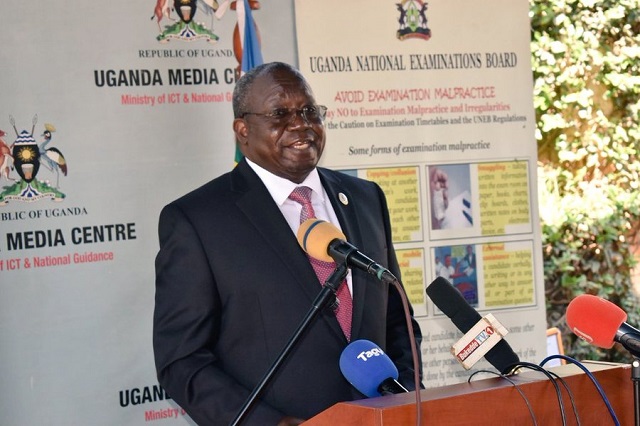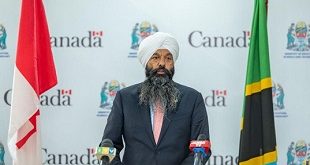
KAMPALA, UGANDA | THE INDEPENDENT | The Uganda National Examinations Board (UNEB) has announced that the official theme for the 2025 Senior Three (S.3) student projects will focus on “Utilization of Available Resources for Community Development.” In a circular issued to headteachers, Sebastian Ngobi, the Acting Executive Director of UNEB, emphasized that the theme is essential for completing the student projects.
Ngobi added that aligning the projects with the theme will not only ensure that students are meeting the requirements for their end-of-cycle assessment but also help them develop skills that are relevant to their communities.
“Headteachers are required to communicate this theme effectively to both teachers and learners to ensure its proper implementation, keeping in mind the timelines and the significance of the project in the learners’ acquisition of skills and certification,” the circular reads in part.
Project work is a mandatory component of the new lower secondary curriculum, and students who do not complete their projects or fail to secure project marks are not be eligible for a certificate, even if they sit for their Uganda Certificate of Education (UCE) final exams.
Jeniffer Musumba Kalule, the UNEB spokesperson, said that the theme encourages projects that are relevant to students’ communities and have the potential to make a positive impact locally. “The theme is designed to be broad enough to ensure that every learner can undertake a project that is not only feasible but also impactful within their community, provided they are properly guided,” said Kalule.
According to the guidelines, students are expected to integrate knowledge from different subject disciplines when undertaking their projects. Different teachers that our reporter talked to said that in the lower classes (S.1 and S.2), projects are subject-specific, but in Senior Three, students are required to combine knowledge from various subjects.
The projects are also assessed across multiple stages, from planning to implementation, ensuring a comprehensive evaluation of each student’s ability to apply what they have learned. This new approach aims to provide a more practical and holistic learning experience, allowing students to demonstrate their understanding of real-world issues and contribute positively to their communities.
Joseph Musaazi, a teacher at Archbishop Kiwanuka Secondary School in Masaka City, acknowledged the positive aspects of the S.3 student projects but expressed concerns about several challenges that could impede their successful implementation. “While the concept of utilizing available resources for community development is a great initiative, there are a few downsides that we need to address to make the process smoother for both students and teachers.”
Musaazi stated. One of the main issues he raised was the teacher-student ratio, especially in large classes. He explained, “In classes with many learners, it becomes difficult to provide adequate guidance and assessment. More teachers are needed to ensure that each student receives the attention they deserve, especially when working on projects that require continuous support and feedback.”
Time management also emerged as a significant concern. Musaazi pointed out that many students struggle to balance the demands of project work, practical assignments, and the theoretical part of the curriculum. “Some students find it challenging to manage their time effectively, and this can impact the quality of their projects. Balancing these tasks is not always easy, especially when deadlines approach,” he noted.
Additionally, Musaazi highlighted that some projects may require funding, which could present difficulties for schools and students in areas with limited resources. “Certain projects demand financial support for materials or tools, and not all schools or students can afford this,” he added. “Without adequate funding, some students may struggle to complete their projects, which could affect their overall performance.”
Despite these challenges, Musaazi remains hopeful that with proper guidance and support, students will be able to overcome these hurdles and make the most of the opportunity to engage in meaningful, community-based projects.
****
URN
 The Independent Uganda: You get the Truth we Pay the Price
The Independent Uganda: You get the Truth we Pay the Price




This will help students to gain social skills and ability
May someone send me some examples of what i can do
Please
i have understood about project
Ok wat are u going to do lwould
Like to know
It is time consuming
What are the examples .
What are the examples of projects from local resources
What are resources in community development.
there are many resources
you can always find the resources in your compound daily like polythene bags
still confused with the project
You will need to do the following
1. Theme of the project
2. Problem in the community
3.Title (7-25) words, related to the theme
4.Purpose of the project (related to solving the problems identified)
5.Objectives of the project
6.Justification of the project
7.Available resource for the project
8.Develop a project activity/plan (procedures)
9.Subjects disciplines intergreted
10.Cross cutting issues
Explain more
Some examples
would you please first help me and give some theme of the on environmental utilasation of resources
Me too
This project stuff is yet quite confusing though.
I guess it needs to be simplified further
you’re right, students are really confused on how to approach this project actually there’s need to be simplified
an example of the problem and project
I think the biggest challenge students face is school dues
hi my name is brian a senior three student i would like you to help me know how can i start the project.
I wish students can create or generate their own themes and topics. Then, approved by the teachers because we as students fail to come up with certain projects. They are indeed good for community development but don’t align with the theme.
For example, the 2025 theme is so hard to create a good project related to physics[machines] or ICT.
It needs getting things from the environment. Things like local materials like old bottles, jerrycans and forth.
Many students have great ideas but these are unseen by theme proposed.
Thanks so much for that I think wat I have understood I will use it to help others
I agree with you
hello , am varence l would like to know the way and how l can do my project becoz my xul did not tell us how to do it
l would like to know the way and how l can do my project becoz my xul did not tell us how to do it
Please drop some examples becoz l am stuck and l don’t know how to start
hello am varence l would like to know how to start my project becoz my xul did not tell us how to start
l would like to know how to start my project becoz my xul did not tell us how to start
kindly requesting for some examples becoz l am stuck
Examples of what projects to do , please
Did you get some examples of projects to do?coz I also have the same problem
examples of projects to do
I wish the ministry give even the real thing because that theme is too hard for rural schools
So we need 2 come up wiz a soln
well i want to some project theme
I WOULD LIKE TO KNOW TITLE OF 7 TO 25 WORDS, THREE OBJECTIVES, PURPOSE, JUSTIFICATION,PROBLEM IT WILL SOLVE IN COMMUNITY BASED FOR PROJECT OF MAKING A SIMPLE SMEARING OIL USING AVAILABE RESOURCES .
Hi there, my name is Tamale John Brian an S.3 student, me I am puzzled of what I can do as my project.
I also need some knowledge about projects and also problem solving.
you can always find the resources in your compound daily like polythene bags